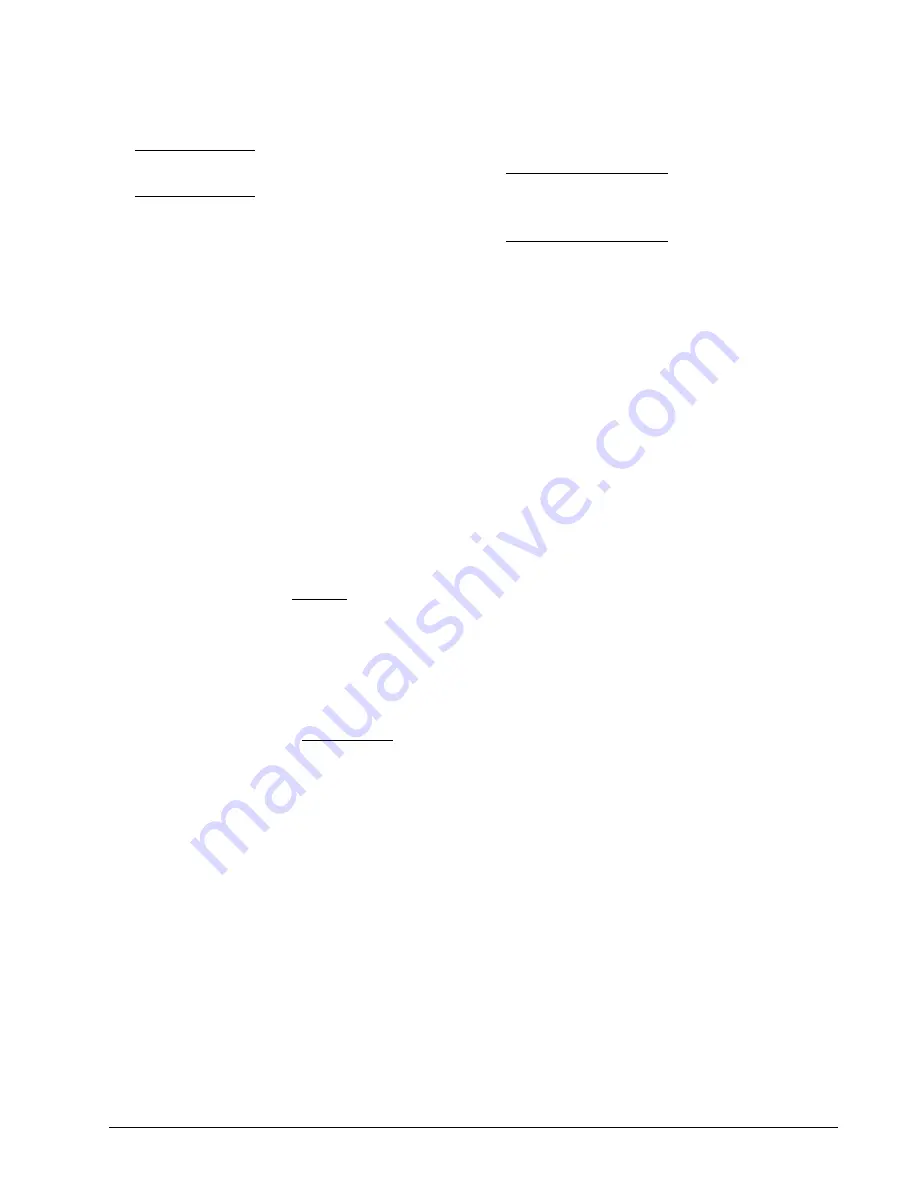
Model 1700 / 1750 Rotary Platform Abraser
20
Operating Instructions ver. 1.0
p/n 135505
milligrams of material would have a wear index of
200.
EXAMPLE:
500 mg. x 1000 cycles = 100 Taber Wear Index
5000 cycle test
(Weight Loss Method)
100 mg. x 1000 cycles = 200 Taber Wear Index
500 cycle test
(Weight Loss Method)
NOTE:
When using a mounting card, ensure the cards
have been conditioned with the test specimen. Take the
weight measurement of the specimen BEFORE and
AFTER it is affixed to the mounting card, then calculate
the difference to obtain the mass of the mounting card.
Subtract this from the final weight measurement.
Volume Loss
When comparing the wear resistance of materials
having different specific gravities, a correction for
the specific gravity of each material should be
applied to the weight loss to give a true measure of
the comparative wear resistance. The use of this
correction factor gives a wear index related to the
loss in volume of the material to which it is applied.
Determine the specific gravity of the material to be
tested in accordance with standard practice.
𝑉𝐿 (𝑐𝑚
3
) =
𝑊
1
− 𝑊
2
𝑆
Where, VL = volume loss
W
1
= weight of test specimen before abrasion, g
W
2
= weight of test specimen after abrasion, g
S = density of the material being abraded, g/cm
3
𝑉𝐿 (𝑚𝑚
3
)/100 𝑐𝑦𝑐𝑙𝑒𝑠 =
𝑉𝐿, 𝑐𝑚
3
𝑥1000
𝑛
𝑥100
Where, n = total number of cycles
For illustration, consider a hypothetical case where
it is desired to compare the wear resistance of an
aluminum die casting material with the wear
resistance of a similar zinc material. In this case,
three specimens, 100 mm square by 6.35 mm thick,
of each type of material are prepared so that an
average result can be obtained. Each test
specimen is run 5000 cycles, using a CS-17 wheel
with a 1000 g load. For purposes of illustration,
assume that both the aluminum and zinc samples
showed a weight loss of 860 mg. It would appear
that the materials have equal resistance to abrasion
since their weight loss was equal, however since
aluminum and zinc materials have different specific
gravities, a correction factor must be applied to give
a true indication of the wear resistance. In doing
this, the aluminum material evidences a much
greater volume loss, as seen by comparison of the
wear factor:
EXAMPLES:
Aluminum
860 mg. x 1000 cycles
= 63.7 Taber Wear Index
2.7 sp. Gravity x 5000 cycle test (Volume Loss Method)
Zinc
860 mg. x 1000 cycles
= 24.2 Taber Wear Index
7.1 sp. Gravity x 5000 cycle test (Volume Loss Method)
When a clear organic coating is compared with a
heavily pigmented color coat, the latter will have a
higher specific gravity as a result of the added color
pigment. It is recommended that a correction factor
be used based on the amount of solids per gallon
of the liquid material.
Visual Change
Certain materials are best adapted for testing to a
clearly marked change in appearance or physical
breakdown of the specimen. This is especially true
of materials with a plated, glazed, polished, or
printed surface where the end point is sharply
indicated; of materials that withstand less than 300
abrasion cycles before reaching the end point of
test; and of textile materials.
The visual method is a subjective test that requires
examination of the test specimen, and should be
conducted under controlled lighting. The test
specimen is normally evaluated prior to subjecting
it to abrasion. After a specified number of cycles or
until wear through to the substrate occurs, the
specimen is inspected and any changes of
appearance are noted.
The test results are most often a description of the
wear, and must be as thorough as possible to
ensure all the details of the wear mechanism are
captured. For example if the test specimen is a
coating, one suggestion is to monitor when the
surface coating has worn down enough so that the
substrate material is visible (this is defined as
‘breakthrough’). For printed specimens, break-
through is when a portion of the printing has fully
worn away. Breakthrough testing should be
quantified by recording the number of cycles it took
for breakthrough to occur.
Other examples of Visual End Points:
1. Loss of Luster
2. Changes of Surface Appearance
3. Color Changes
4. Appearance of a Hole
5. No longer Legible (e.g. text)






































